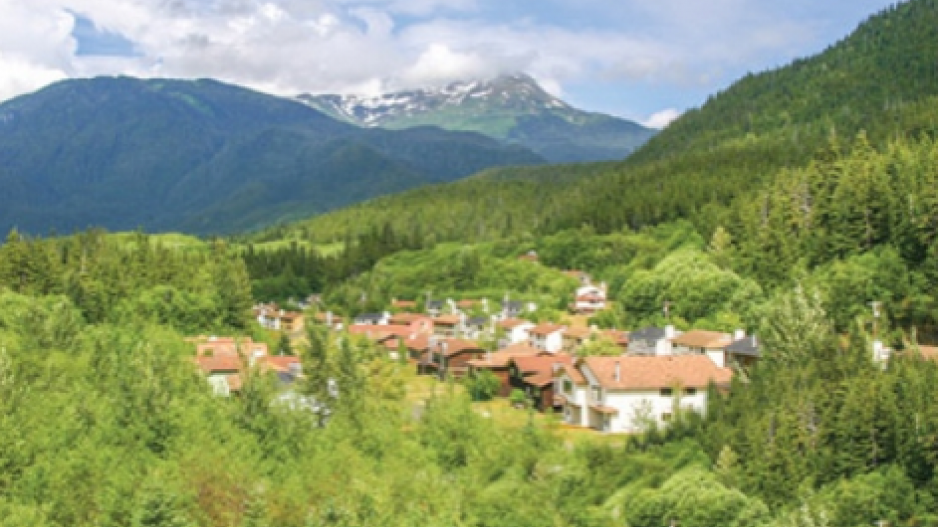The proponent of Kitsault Energy, a proposed 20 MTA LNG project in British Columbia, said a positive final investment decision has been made, but he added some significant caveats.
This is potentially the first such decision in the province.
However, sales contracts have yet to be announced, regulatory work is far from being completed, no environmental assessments have been conducted for LNG facilities and no deals have been reached with local First Nations.
There’s no pipeline or export license, either.
If it sounds far-fetched, that's because owner and entrepreneur Krish Suthanthiran says the dynamics at play when it comes to making a final investment decision for Kitsault Energy are different than other proposed LNG projects.
“I’m an entrepreneur, a private owner,” he said. “Unlike other publicly held multi-national, multi-billion dollar public companies, we already have a place, we already have resources, so that’s a big, big start for us, whereas all of them are trying to find a place.”
He referred back to the beginning of January of this year when China’s CNOOC Ltd. decided on a Digby Island location near Prince Rupert for their export facility.
Aside from meetings with the Niska'a First Nations and attending some leadership election conferences, he hasn't started negotiating with First Nations in earnest.
"First Nations groups are not necessarily monolithic, there’s a lot of diverse views, so you have to work with each one of them, not just collective," said Suthanthiran.
In the crowded field of proponents who hope to liquefy and export Northeast B.C.’s natural gas, his project is unique in a number of ways.
Suthanthiran bought the empty town in 2005. At the time, he didn’t think of it as an LNG export facility. It has been abandoned since 1983, but Suthanthiran said the existing infrastructure and location of the site give it an edge over the others.
He decided to move ahead with his plan to ship LNG out of the abandoned mining town two years ago. He says he’s certain it’ll happen, but he still has a long way to go.
How far along is the project? It has made progress in the past year. Suthanthiran said he has identified offtakers for the product in Asia, and he’s drummed up interest from parties he said can finance the pipeline that would deliver the gas to the coastal facility. Now he’s working towards making partnerships with upstream sources in western Canada, and said he hopes to meet with the Calgary mayor and Alberta premier as well as some of the industry leaders in that province.
“Our goal is to bring a pipeline from Fort Nelson or Dawson Creek or Chetwynd so we can pick up the gas from Alberta . . . and B.C. to the coast,” he said.
In terms of who would build the pipeline, Suthanthiran said he is looking to get Spectra or TransCanada on board.
“They have an agreement in place with First Nations along the pipeline route, and they already are in the permit process for a multiple pipeline corridor,” he said.
His facility would have an advantage over those further south. Rather than piping the extra kilometers down to Prince Rupert or Kitimat, at a cost that he estimated to be $2 to $4 billion more, the pipeline could end at Kitsault Energy.
Once he lines up his upstream partners to get the gas out of the ground, his pipeline built to transport it, and his first floating LNG (FLNG) facility up and running in his own deepwater port, he expects the cost to be $10 billion. One FLNG facility is capable of liquefying 5 million tonnes of LNG per year. “To go to 20 million tonnes per year we’re looking at $20 billion investment,” he said. “And if I have to go to 30 million tonnes per year, then we’re looking at $30 billion.”
Construction is planned to begin in 2016, with the first shipment made in 2018.
“If you look at some of the other plants that are looking at 2020 and 2023, I think that we will be well ahead of that,” he said.
Asked when he was going to apply for his Environmental Assessment, he said he was confident that many of the previous environmental studies done in the Kitsault area would pave the way. “Kitsault has already been studied many, many times because of the mine,” said Suthanthiran. “Also the government of Canada has studied the environmental impact of a potential port site, so we have a lot of stuff already that we can use.”
Suthanthiran is optimistic that his near-empty village gives him a major advantage.
"What we have in fact is not just a campsite, we have really attractive housing. We will attract some really high quality talent, people that would like to live there longterm," he said.
Neither Spectra or TransCanada returned calls as of press time.
Alaska Highway News



